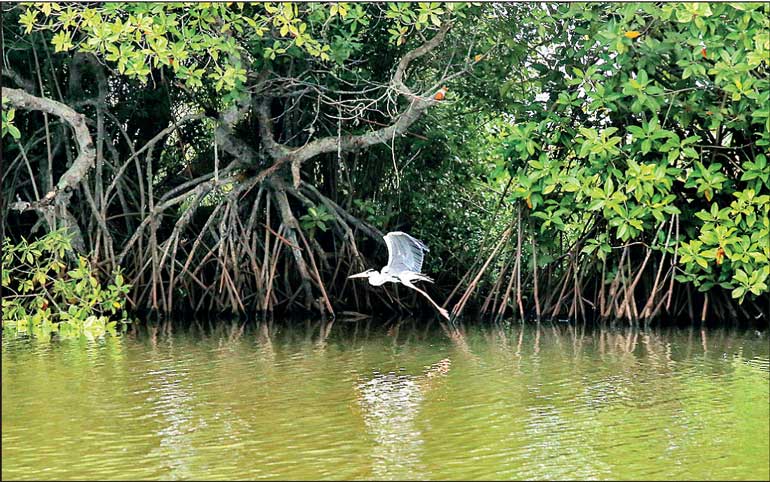Saturday Apr 19, 2025
Saturday Apr 19, 2025
Friday, 5 August 2022 00:00 - - {{hitsCtrl.values.hits}}

By Benno Böer, Shawn Kelly
and Andrew Dansie
UNESCO is deeply engaged in the monitoring, scientific research and sustainable utilization of mangroves. The inclusion of mangroves in UNESCO-designated sites, such as Biosphere Reserves, World Heritage sites and Global Geoparks contributes to improving the knowledge, management and conservation of mangrove ecosystems throughout the world.
The International Day for the Conservation of the Mangrove Ecosystems, celebrated each year on 26 July, aimed to raise awareness of the importance of mangrove forests for humanity. This year, UNESCO released a new global poster series on the mangrove ecosystems in the world, a first of its kind https://www.unesco.org/en/articles/unesco-publishes-125-posters-mangroves-around-world
Today, these extraordinary ecosystems are under serious threat. It is estimated that more than half of all mangrove forests globally have been lost to coastal aquaculture, agriculture, deforestation, tourism development and climate change. Half of mangrove losses in the last decade occurred in Asia alone. This trend needs to be redressed.
Naturally, mangroves occur mostly in the tropics and sub-tropics, along coastal shores that are well protected from high wave activities, as well as in deltas, lagoons, and estuaries. These restrictions leave just a narrow fringe of suitable geomorphology where mangroves can naturally grow.
But what if mangroves could float?
If they could indeed float, the narrow range of space that is suitable for mangroves could be significantly widened in scope to include the surface of vast stretches of the oceans.
UNESCO, with Mourjan Marinas and Lusail City carried out a successful experiment in Qatar some years ago, and the results were quite remarkable. Planting seeds of Avicennia marina mangroves in sand-filled containers with a semi-permeable membrane at the bottom of the containers allowed seawater to provide moisture to the roots, whereas the plants itself were exposed to the air, allowing for enough oxygen supply. The system was simply supported with air-filled containers for buoyancy.
The system is simple, replicable, and does not need any energy for pumping.
Further tests have been carried out by the Water Research Laboratory and Global Water Institute at the University of New South Wales (UNSW) in Australia, and a new discussion building on these experiments has been initiated between UNESCO, the Asian Institute of Technology (AIT), in Thailand, and UNSW.
UNESCO, AIT and UNSW agree that further tests are necessary, together with some basic scientific research, to develop this promising new technology in order to obtain science-based data and knowledge for wider and possibly profitable applicability.
To be sure, a whole new system of forestry on the ocean’s surface could be developed, for the production of fuel, biomass, honey, carbon sequestration and other products. But it is not only for producing useful commodities without the need of precious freshwater or land. The carbon-sequestration capacity of these systems needs to be demonstrated, as well as the capacity to take up land-based marine pollutants.
UNESCO, AIT and UNSW are in discussion on how best to advance this innovative technology and to demonstrate to the general public and investors this new system for the production of seawater-based trees, that can function as a new and clean source of energy, improve ecosystems services and livelihoods for coastal communities, as well as for the sequestration of atmospheric carbon.
Benno Böer is the Natural Sciences Specialist of the UNESCO New Delhi Office, which covers Bangladesh, Bhutan, India, Nepal, the Maldives, and Sri Lanka. Shawn Kelly is the Director of International Affairs at the Asian Institute of Technology in Bangkok, Thailand. Andrew Dansie is the Academic Lead, Humanitarian Engineering at the University of New South Wales in Sydney, Australia